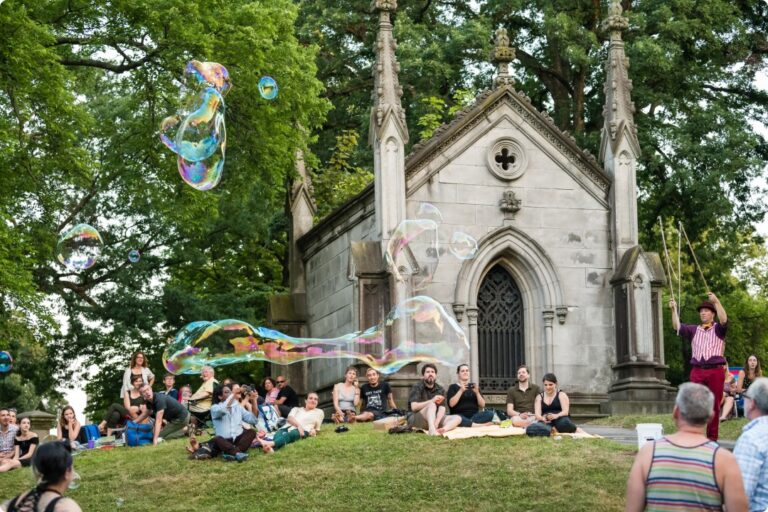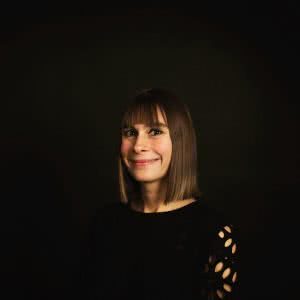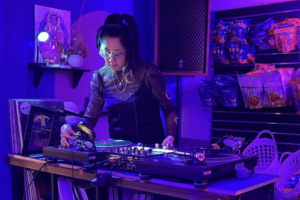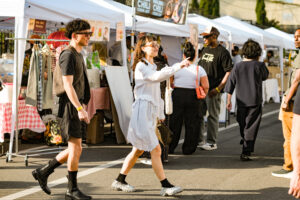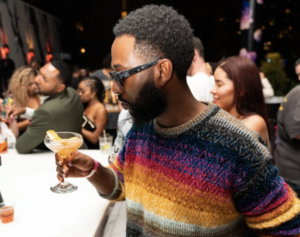We’ve all heard that you need to fail in order to succeed. But there’s a reason that’s stamped on countless inspirational products: It’s true.
During Eventbrite’s RECONVENE Sessions: Tales of Failure: How I Messed Up and What I Learned, four creators shared specific times they messed up, and the lessons they learned after the smoke cleared.
Read on for key takeaways from each of the event’s speakers. For more insights from Eventbrite’s ongoing RECONVENE events, visit our recaps hub.
Watch the event recordings — featuring Green-Wood Cemetery, Bloody Mary Festival, Eastwind Books of Berkeley, and UrbanGlass — below:
The Green-Wood Cemetery: Harry Weil, Director of Public Programs
The historic Green-Wood Cemetery in Brooklyn, which is located on more than 470 acres, hosts 300-plus events a year, including walking tours, book talks, and concerts in the catacombs. But despite good intentions to redefine what a cemetery is, there were missteps in its path to that level of programming, says Weil, who’s the director of public programs and special projects.
In particular, he says, Green-Wood Cemetery failed to:
Identify the right programming partners. When it first started hosting events, the cemetery was the “new kid on the block,” Weil says. It needed to work with the right partners to build its repertoire and solidify lots of connections. Instead, people treated the cemetery as a site rental, rather than a collaboration partner.
Capitalize on success. The cemetery hosted “amazing twilight tours” that always sold out — but only four times a year. A better move would have been to figure out how to capitalize on such popular programming, in a sustainable way that didn’t over-tax tour guides or staff. Green-Wood was essentially failing itself, Weil says: It was being handed a successful event “on a silver platter” and not taking advantage of the opportunity.
Reach out to the local community. Green-Wood wasn’t connecting with the local community — not marketing to these people, or organizing programs that catered to them. That left a tremendous untapped audience.
In retrospect, Weil is grateful for these failures, Pollyanna as that sounds. They taught him a few key lessons:
Communicate what your goals are. Be honest and clear about what your goals are, who you want to reach, and what revenue you’d like to achieve.
Never assume you know an audience. You might think, “Oh, this community will only come to this type of event; or that audience will only spend that amount of money.” But anything you assume is hypothetical. Green-Wood got to know its audience by conducting surveys and having volunteers at the entryways to meet and talk to visitors.
Don’t work in a silo. Bring as many people as possible into the conversation — and they don’t all need to be on the programming team. Everyone on staff should feel like they have a voice in what events are held.
The Bloody Mary Festival: Evan Weiss, Co-Founder
The Blood Mary Festival, which started in New York in 2014, now takes place in 10 cities around the world — and is the biggest Bloody Mary event in the world. Many mistakes were made in the beginning, says Weiss, who created the event with his wife. During RECONVENE Sessions, he described three of those failures, as well as their solutions.
Inadequate procedures for getting attendees in quickly. In the early days of the event, long lines at the front gate (and a small staff) caused patrons to get bottlenecked at the door for 30 to 45 minutes. Since the festival is only three hours long, that was unacceptable.
The solution: Weiss created a VIP “early admission” ticket that allowed patrons to enter the gates 45 minutes before others, helping eliminate 35% of the problem. (Bonus: There was an upcharge on these tickets.) The festival’s staff also utilized volunteers to help with check-in at the front gate; in exchange, these helpers got free admission. With that greater bandwidth, the team instituted pre-check procedures (such as checking people’s IDs while they were still in line).
Branched out to events outside the founders’ expertise. After producing several Bloody Mary Festivals, Weiss deviated and launched The Bloody Mary & Oyster Feast. “We decided it was going to be so popular and so huge it would need to be a two-day event,” he says — but it was a flop.
The solution: From then on, Weiss and his team stuck with what they were good at, and focused on scaling the Bloody Mary Festival instead of expanding to other types of events.
Got into selling merchandise and T-shirts. It seemed like a clever way to generate incremental revenue. But it actually meant carrying “a huge inventory of T-shirts” in many different sizes, Weiss says, which cost money.
The solution: The main problem was that the festival created too many T-shirt designs. For now, Weiss has moved on to smaller swag, like enamel pins and fridge magnets.
Eastwind Books of Berkeley: Janie Chen, Events Coordinator
This bookstore in California is the preeminent place for Asian-American and ethnic studies literature, and its Multicultural Services arm focuses on community education. That includes frequent events, such as poetry readings and panel discussions. Events coordinator Chen described three specific challenges that occurred during the pandemic and how her team overcame them.
Accessibility to online programming. At their biggest virtual event, which featured popular comedians, many attendees could not find their Zoom link and were unable to access the event. A large part of the audience included older folks who particularly struggled with this new technology.
The solution: Using multiple platforms, such as Facebook Live, and archiving events on YouTube, so patrons could watch via the technology they felt most comfortable with — and catch it later if they had any trouble.
Making virtual events flow. No matter how much you prepare for it, sometimes mishaps arise during a live event, or there are miscommunications about, for example, who should be on camera and when.
The solution: Host tech rehearsals! Doing so makes it easier to course-correct during the actual program.
Limited staff capacity and resources. This one speaks for itself; most creators will understand what it’s like to work with limited resources.
The solution: Community partnerships. During a recent hybrid event, another organization provided Eastwind with a physical space, plus assisted with the tech. Lean on the support of your partners, especially in terms of curating, promoting, and diversifying your events.
UrbanGlass: Kellie Krouse, Instructor & Registrar
UrbanGlass is the largest professional, public-access glass facility in the New York City area. Krouse, its registrar, shared a tale of failure: Early in the pandemic, the company had to figure out how to adapt its decades-long education program to the new virtual space it had been forced into.
Initially, Krouse and her team scheduled a hands-on event to make glass ornaments, “cookies,” and snowflakes. They expected 40 attendees and got two — which meant that, clearly, the team needed to reevaluate its approach to online programming.
Their big takeaway: Know your audience, listen to your audience, and speak to your audience.
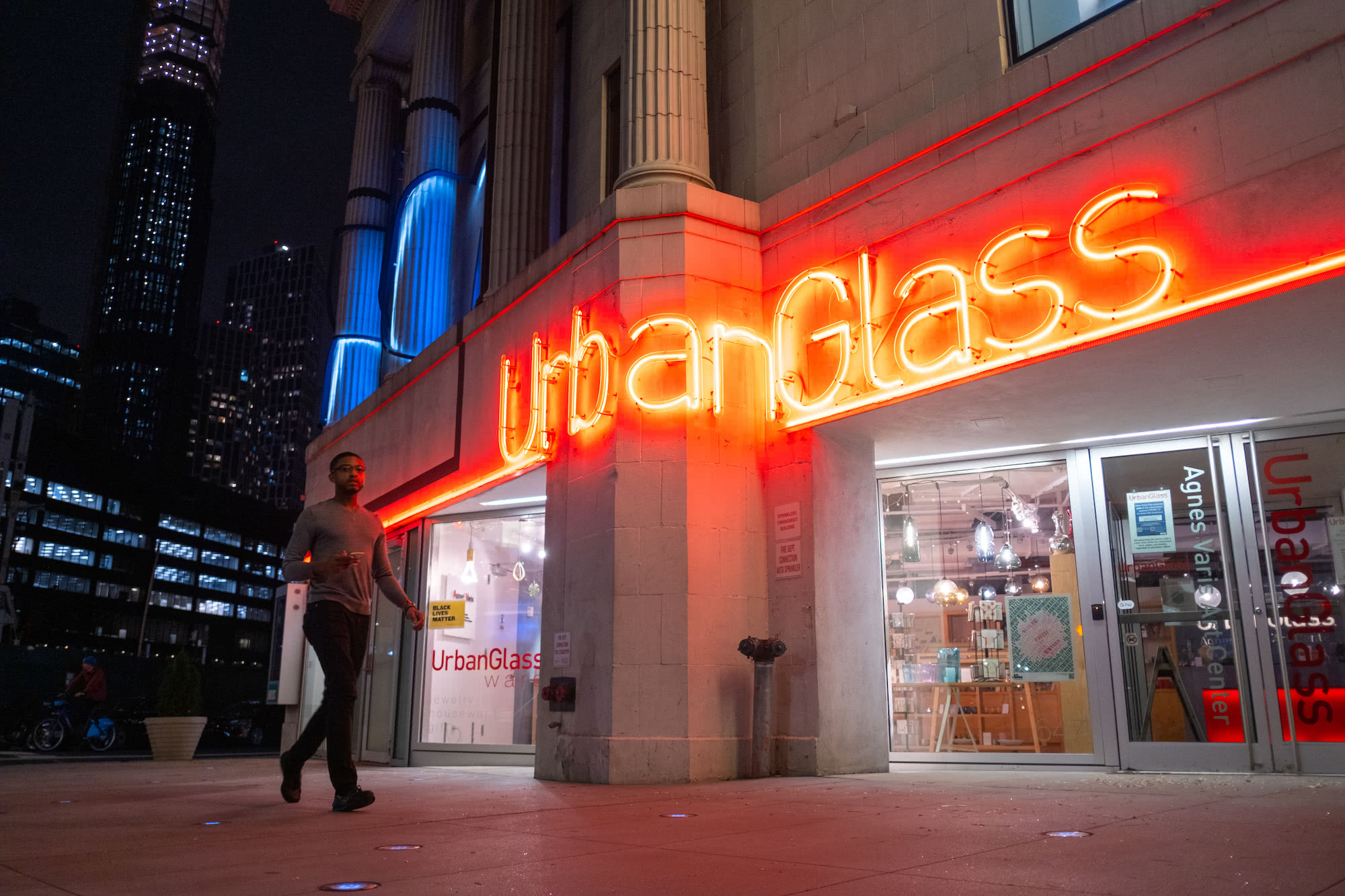
Urban Glass, photography by Ryan Muir.
The UrbanGlass team concluded that community and togetherness were most important to their audience. So they focused on, for example, virtual demonstrations and group classes in which people could work on designs together. Their audience appreciated the opportunity for community connection: As one attendee said in a post-event survey, “While Zoom isn’t my favorite, I was so happy to have contact with any form of the glass community.”
Read more about how UrbanGlass is fostering a new generation of glass artists
